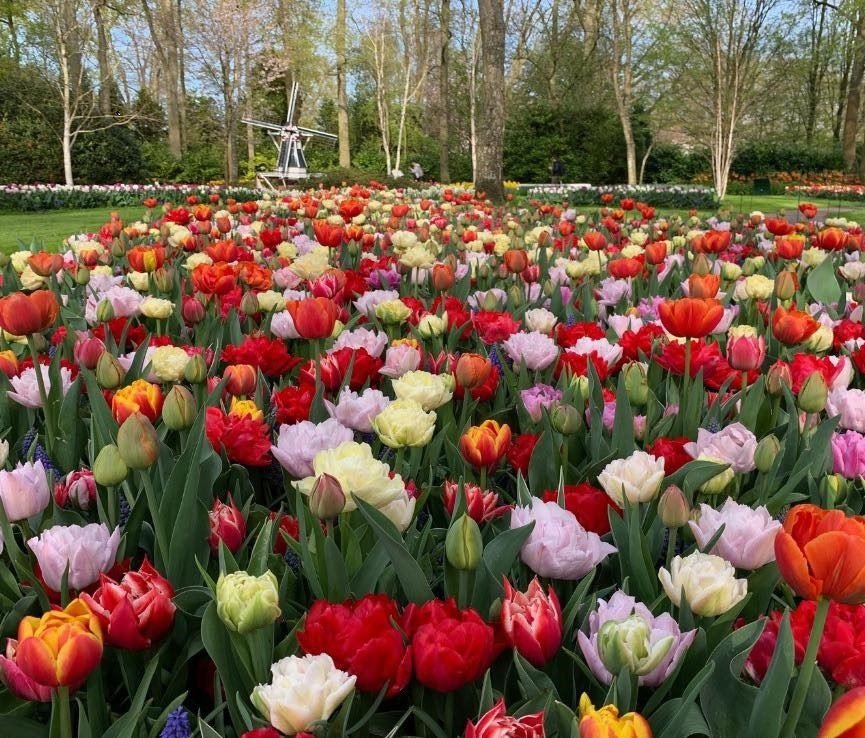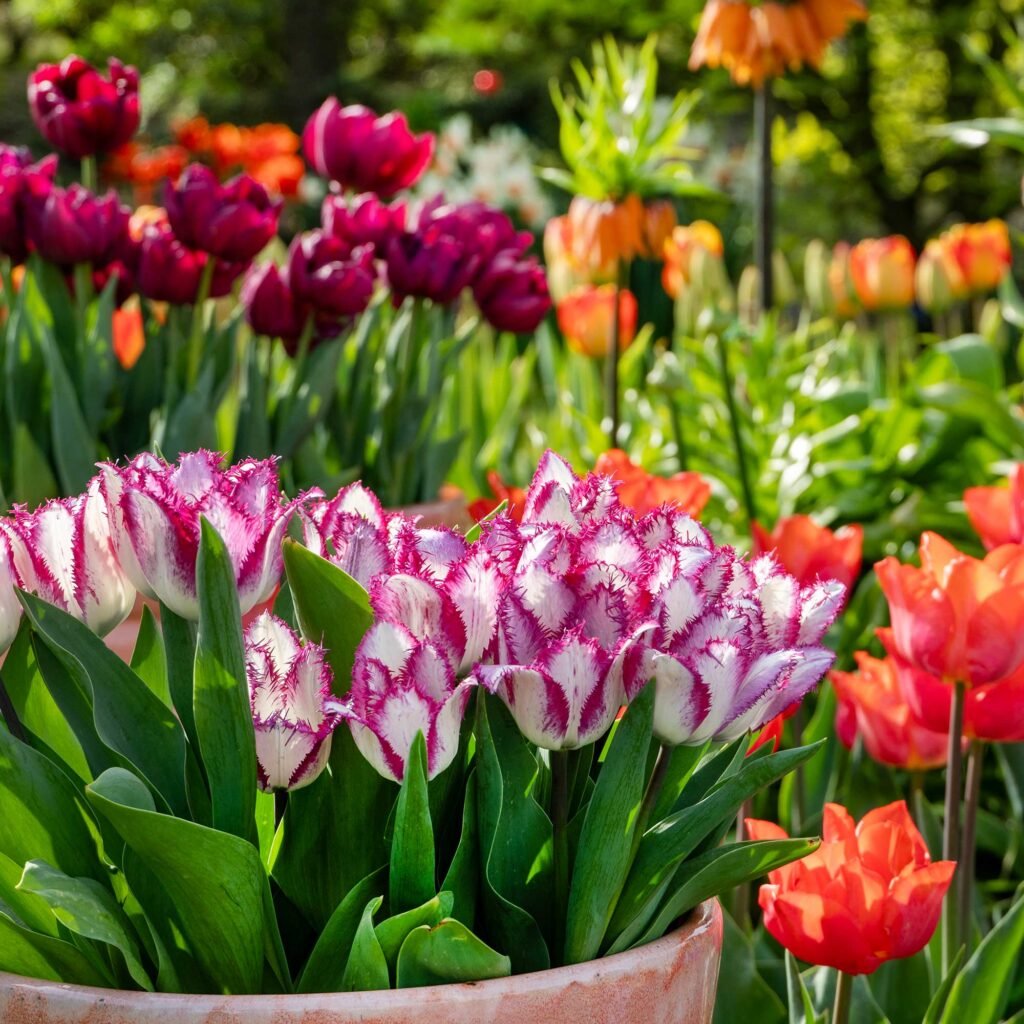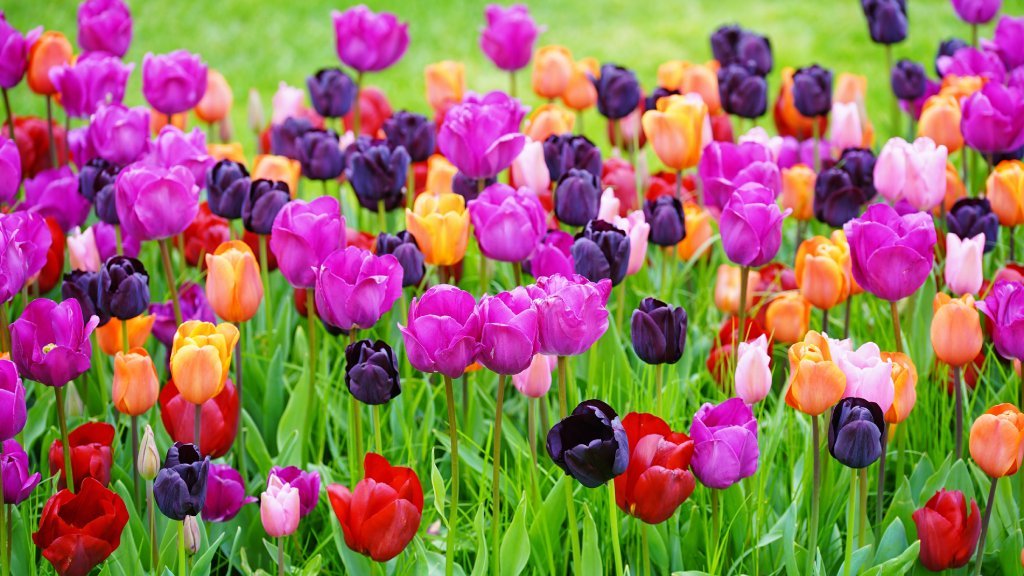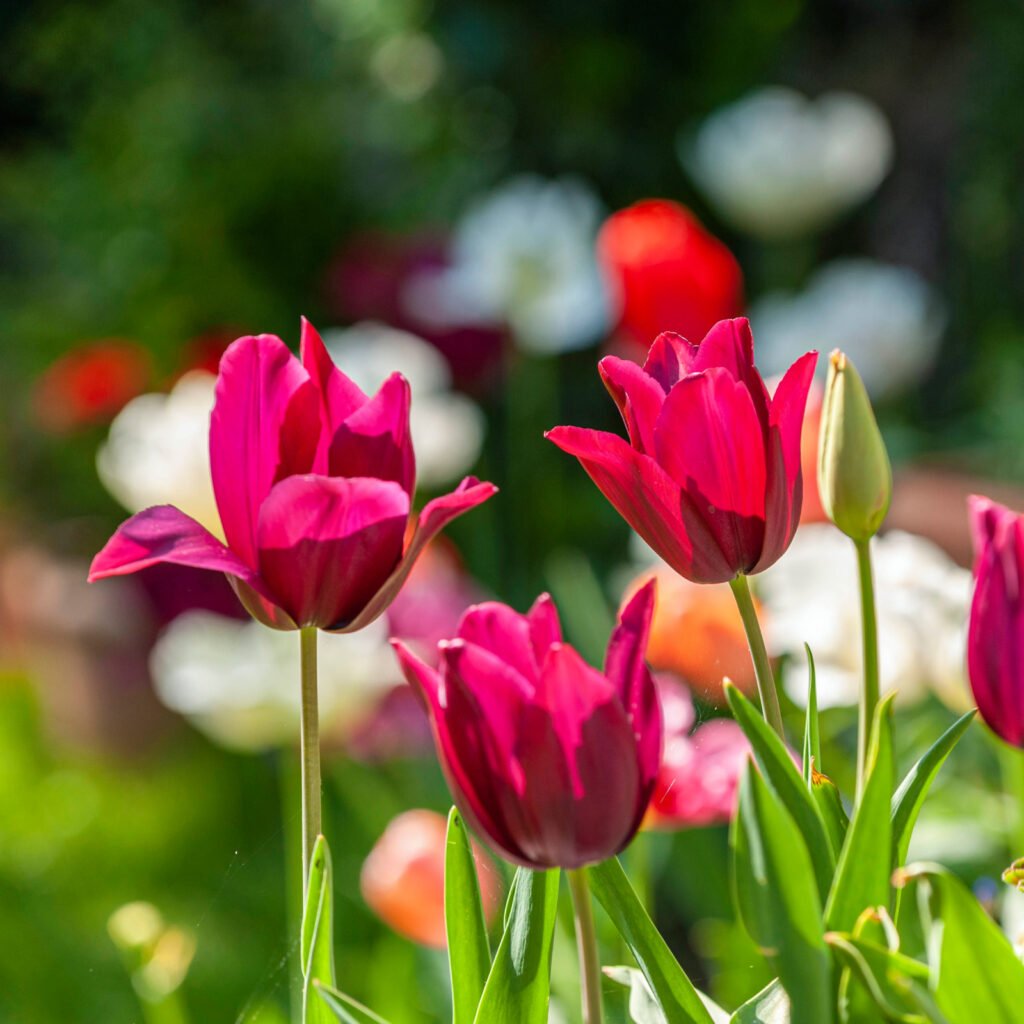Tulips are among the most beloved spring-blooming bulbs, celebrated for their vibrant colors, elegant shapes, and ability to brighten gardens after long winters. However, despite their popularity, many gardeners struggle to keep tulips healthy year after year. Often, the culprit isn’t the climate or soil but common mistakes that can severely impact their growth, bloom quality, and longevity. Understanding these errors and learning how to fix them ensures that tulips remain vibrant, resilient, and show-stopping in every season. This guide explores six frequent mistakes gardeners make with tulips and provides expert strategies to correct them.
Mistake 1: Planting Bulbs Too Shallow or Too Deep

Tulip bulbs have specific planting depth requirements. Incorrect planting depth can compromise root development, bulb protection, and bloom quality.
Symptoms:
- Tulips fail to emerge or produce weak, spindly stems.
- Flowers bloom late, unevenly, or not at all.
How to Fix It:
- Ideal Depth: Plant tulip bulbs 6–8 inches deep, measured from the base of the bulb to the soil surface.
- Spacing: Keep bulbs 4–6 inches apart to avoid overcrowding, which can lead to competition for nutrients and water.
- Tip: In sandy soils, plant slightly deeper to prevent bulbs from drying out; in heavy clay soils, plant slightly shallower to avoid rot.
Correct planting depth ensures tulips have room for healthy root development and are protected from frost and pests.
Mistake 2: Ignoring Soil Drainage

Tulips are highly susceptible to root and bulb rot if planted in poorly drained soil. Wet, compacted soils suffocate roots and encourage fungal diseases.
Symptoms:
- Bulbs appear soft or mushy.
- Stunted growth or sudden collapse of shoots.
- Foul smell from the soil around bulbs.
How to Fix It:
- Soil Preparation: Amend soil with organic matter, sand, or perlite to improve drainage.
- Raised Beds: Consider planting tulips in raised beds or mounds to ensure water drains away from bulbs.
- Avoid Heavy Watering: Only water when the soil is dry to the touch.
Proper drainage protects tulips from rot, encourages strong root systems, and promotes healthy blooms.
Mistake 3: Overwatering or Underwatering

Watering mistakes are common among tulip growers. Both extremes can harm bulbs and prevent flowering.
Symptoms:
- Overwatering: Yellowing leaves, bulb rot, and fungal growth.
- Underwatering: Wilting, poor flower development, and weak stems.
How to Fix It:
- Moderate Watering: Water tulips once a week during dry spells, ensuring soil is moist but not soggy.
- Monitor Weather: Reduce watering after rainfall or in humid conditions.
- Mulching: Apply a light layer of mulch to retain moisture in dry climates without keeping soil wet.
Balanced watering provides tulips with the hydration needed to thrive without risking rot.
Mistake 4: Failing to Provide Enough Sunlight
Tulips are sun-loving plants, and insufficient light can drastically reduce bloom quality and plant vigor.
Symptoms:
- Leggy, thin stems.
- Small, pale flowers.
- Leaves grow tall but weak.
How to Fix It:
- Full Sun: Plant tulips in locations receiving 6–8 hours of direct sunlight per day.
- Avoid Shade: Keep tulips away from large shrubs, trees, or buildings that cast prolonged shadows.
- Rotate Planting Locations: If tulips are in pots, move them to sunnier spots during early spring.
Ample sunlight supports photosynthesis, energizes bulb development, and produces large, vibrant flowers.
Mistake 5: Cutting Leaves Too Early

Many gardeners remove tulip leaves immediately after flowering, thinking it tidies up the garden. This practice can harm the plant’s ability to store energy for the next season.
Symptoms:
- Reduced bloom size the following year.
- Bulbs fail to produce flowers at all.
How to Fix It:
- Leave Foliage Intact: Allow leaves to yellow and wither naturally before removing them.
- Photosynthesis: Foliage continues to convert sunlight into energy stored in the bulb for next year’s blooms.
- Optional Support: Tie taller leaves gently to prevent flopping, but avoid removing them prematurely.
Patience with foliage ensures tulips store enough energy for strong, showy blooms the following season.
Mistake 6: Neglecting Bulb Care After Blooming

Once tulips finish flowering, proper care is crucial for longevity. Ignoring post-bloom care reduces bulb vigor and lifespan.
Symptoms:
- Bulbs fail to flower in subsequent years.
- Smaller flowers or fewer blooms.
- Bulb shrinkage or disease.
How to Fix It:
- Deadheading: Remove spent flowers to prevent energy diversion into seed production.
- Fertilization: Apply a low-nitrogen, high-phosphorus fertilizer after flowering to strengthen bulbs.
- Bulb Lifting (Optional): In areas with wet summers or cold winters, dig up bulbs after foliage dies back, clean, and store in a cool, dry place.
- Replanting: Replant bulbs in autumn with proper depth and spacing for the next season.
Post-bloom care is essential to maintain healthy bulbs that consistently produce beautiful flowers year after year.
Additional Tips for Tulip Success
- Pest Protection: Watch for aphids, slugs, and bulb-eating rodents. Use protective barriers or natural deterrents as needed.
- Soil Testing: Ensure soil pH is slightly acidic to neutral (6.0–7.0) for optimal nutrient availability.
- Companion Planting: Plant tulips with perennials that emerge after tulip foliage dies back to maintain garden aesthetics without disturbing bulbs.
- Variety Selection: Some tulip cultivars are more resilient and perennial; choose accordingly if re-blooming is desired.
These tips, combined with avoiding the six common mistakes, create the foundation for long-lasting, thriving tulip gardens.
Conclusion
Tulips are stunning and rewarding plants, but they require careful attention to thrive year after year. The most common mistakes—incorrect planting depth, poor soil drainage, watering errors, insufficient sunlight, premature leaf removal, and neglecting post-bloom care—can all lead to weak plants, reduced blooms, or even bulb loss.
By understanding and correcting these errors, gardeners can ensure healthy, vibrant tulips that return each spring with strong stems, lush foliage, and abundant flowers. Proper planting, watering, sun exposure, and maintenance practices work together to create an environment where tulips can flourish, bringing seasonal beauty and elegance to any garden. With careful attention, tulips will reward gardeners with years of show-stopping blooms and a reliable burst of spring color.
